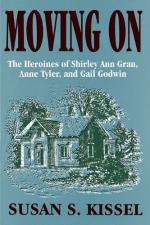|
This section contains 6,664 words (approx. 23 pages at 300 words per page) |

|
SOURCE: “The Burden of Home: Shirley Ann Grau's Fiction,” in Critique, Vol. 28, No. 3, Summer, 1987, pp. 181-93.
In the following essay, Bukoski demonstrates how Grau uses “the house” as the center and substance of many of her works.
In Shirley Ann Grau's fiction, houses provide a loci for the psychological and emotional lives of families.1 Her fictional houses alienate, however, when they become representative of the failure of the family to provide direction to its members. This, I believe, partly answers the critics who see in Grau's work the “absence of … unifying symbol, or theme, or resolving incident.”2 When social and emotional life turns inharmonious inside a house, the sense we get of the place changes. In “Fever Flower” from The Black Prince and Other Stories (1955), the house becomes “very quiet and empty” (177)—an emotionally and psychologically safe place—when the child Maureen's parents are out and she is...
|
This section contains 6,664 words (approx. 23 pages at 300 words per page) |

|


